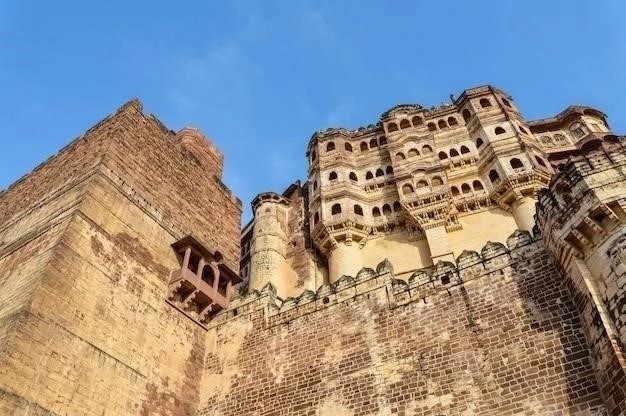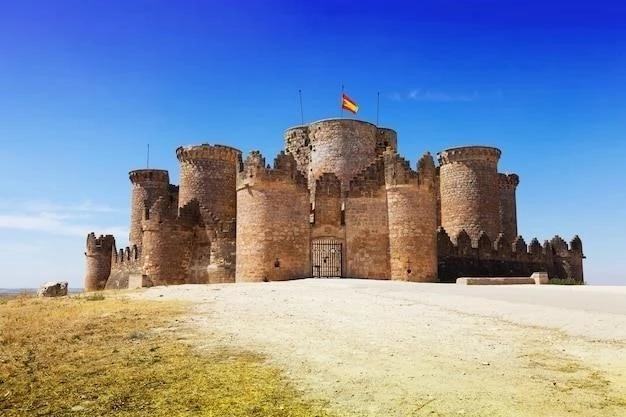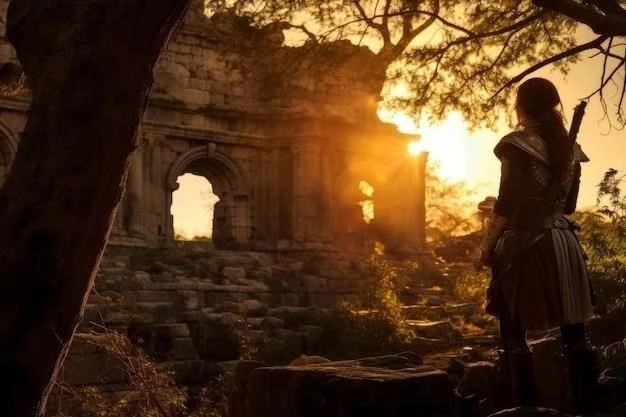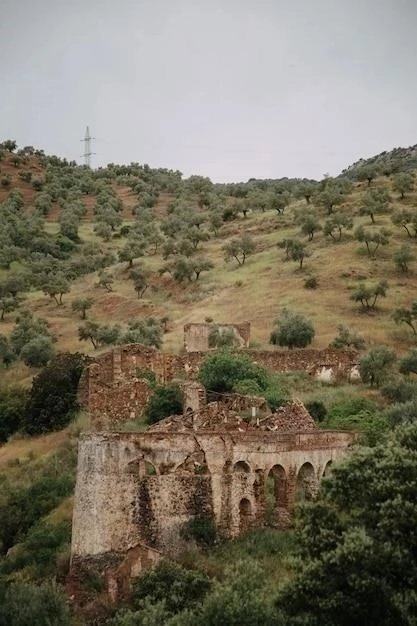The charm and beauty of the Konkan coast are incomplete without mentioning the majestic Vijaydurg Fort‚ an architectural marvel that stands tall as a symbol of Indias rich historic past. Nestled in the picturesque town of Vijaydurg in Maharashtra‚ this fort is a must-visit for history buffs and ardent followers of Hinduism alike.
History and Construction
Vijaydurg‚ sometimes written as Viziadurg‚ holds the distinction of being the oldest fort on the Sindhudurg coast; Its initial construction dates back to the regime of Raja Bhoja II of the Shilahar dynasty‚ between 1193 and 1205. Originally known as Gheria due to its proximity to the village of Girye‚ the fort witnessed a change in its fate and name in 1653. Chhatrapati Shivaji Maharaj‚ the legendary Maratha warrior king‚ seized the fort from the Adilshahi dynasty of Bijapur. He renamed it Vijaydurg‚ meaning “Victory Fort‚” signifying his triumph.
The forts strategic location on a hill near the mouth of the Vaghotan River (also referred to as Vaghotan Creek)‚ surrounded on three sides by water‚ made it an ideal naval base. It served as the headquarters of the Maratha navy under the leadership of the esteemed Admiral Kanhoji Angre from 1698.

Architectural Significance
Vijaydurg Fort is a testament to the architectural prowess of the time. Built primarily using locally quarried laterite stone‚ the fort boasts robust fortifications designed to withstand sieges and enemy attacks. Some of the notable architectural elements include:
- Triple Fortification Walls: Chhatrapati Shivaji Maharaj further strengthened the fort by adding three tiers of fortification walls on the eastern side‚ each reaching a height of 36 meters‚ enhancing its defensive capabilities.
- Bastions: The fort is studded with 27 strategically positioned bastions‚ offering vantage points for cannons and providing a comprehensive defense against invaders.
- Citadel: At the heart of the fort lies a well-protected citadel‚ housing the main administrative buildings and serving as the last line of defense during attacks.
- Temple: Within the forts walls‚ a temple stands as a testament to the religious beliefs of the time and offers a glimpse into the cultural practices of the rulers.
- Underground Tunnels: A network of secret underground tunnels adds an element of intrigue to the forts layout. These tunnels served as escape routes during emergencies and provided covert communication channels.

Exploring Vijaydurg Fort Today
Today‚ Vijaydurg Fort stands as a protected monument‚ offering visitors a captivating journey back in time. The forts strategic location‚ with the Arabian Sea stretching out on three sides‚ provides breathtaking views. As you explore the fort‚ youll encounter:
- Grand Entrance: The forts main entrance‚ with its imposing structure and intricate carvings‚ offers a glimpse into the grandeur that awaits within.
- Courtyards: The forts layout encompasses three spacious courtyards‚ each serving a specific purpose‚ from housing soldiers to providing space for administrative activities.
- Ruins of Palaces and Barracks: Though time has taken its toll‚ remnants of palaces‚ barracks‚ and other structures within the fort offer a glimpse into the lives of the people who once inhabited this majestic fortress.
Getting There
Vijaydurg Fort is located in the Sindhudurg district of Maharashtra‚ approximately 48 kilometers south of Ratnagiri.
- By Air: The nearest airport is Ratnagiri Airport‚ about 50 kilometers away.
- By Train: The nearest railway station is Kankavali‚ approximately 45 kilometers from Vijaydurg.
- By Road: Vijaydurg is well-connected by road‚ and state-run buses ply regularly from major cities like Mumbai and Pune.
Preservation Efforts
Vijaydurg Fort‚ though a magnificent structure‚ faces the inevitable challenges posed by time and the elements. Recognizing its historical and architectural significance‚ the Archaeological Survey of India (ASI) has undertaken conservation efforts to preserve this heritage site for generations to come.
Conclusion
A visit to Vijaydurg Fort is an immersive experience‚ transporting you back to an era of valiant kings‚ maritime prowess‚ and architectural ingenuity. As you stand atop its ramparts‚ gazing at the vast expanse of the Arabian Sea‚ you can almost hear the echoes of history whispering through the wind. Whether you are a history enthusiast‚ an architecture aficionado‚ or simply seeking a journey off the beaten path‚ Vijaydurg Fort promises an unforgettable experience.
A Legacy Etched in Stone: Beyond the Fortifications
While the imposing structure of Vijaydurg Fort captivates the eye‚ it is the echoes of its vibrant past that truly resonate within its walls. This was not merely a military installation but a thriving hub of Maratha power. Within the forts confines‚ one can discover remnants of a sophisticated water management system‚ highlighting the ingenuity of its builders. Large granaries speak to the forts ability to withstand prolonged sieges‚ while whispers of a once-bustling marketplace hint at the economic vitality that once pulsed through its streets.
Vijaydurg: A Microcosm of Maratha Maritime Dominance
Vijaydurg holds a pivotal place in the narrative of Maratha maritime supremacy. Under Chhatrapati Shivaji Maharajs vision‚ the fort transformed into a cornerstone of the Maratha navy‚ challenging established naval powers in the region. Its strategic positioning facilitated control over trade routes‚ effectively curtailing Portuguese influence along the western coast. It was from this very fort that Kanhoji Angre‚ the formidable Maratha admiral‚ launched daring naval expeditions‚ solidifying his reputation as a fearsome force on the high seas.

Conservation Imperatives: Safeguarding a Heritage Treasure
Despite its historical significance and enduring allure‚ Vijaydurg Fort faces an ongoing battle against the ravages of time‚ environmental factors‚ and encroaching urbanization. The Archaeological Survey of India (ASI) has undertaken commendable conservation efforts‚ but the challenges are multifaceted. Preservation initiatives require a multi-pronged approach encompassing:
- Structural Stabilization: Continuous monitoring and expert intervention are crucial to address structural weaknesses‚ particularly in areas prone to erosion and weathering.
- Environmental Management: The forts coastal location makes it vulnerable to rising sea levels and saline winds. Implementing measures to mitigate these risks is essential for long-term preservation.
- Sustainable Tourism: Balancing tourist access with preservation goals is paramount; Promoting responsible tourism practices and raising awareness about the forts historical significance are vital.
- Community Engagement: Involving local communities in conservation endeavors fosters a sense of ownership and ensures the sustainable management of this heritage treasure for generations to come.

Vijaydurg Fort: A Call to Remembrance and Responsibility
More than just a crumbling edifice‚ Vijaydurg Fort stands as a poignant reminder of a glorious past—a testament to the strategic acumen‚ architectural brilliance‚ and indomitable spirit of the Maratha Empire. It is a heritage site worthy of our admiration‚ respect‚ and unwavering commitment to its preservation. As we marvel at its grandeur‚ let us also heed the call to become stewards of its legacy‚ ensuring that future generations can stand upon its ramparts and draw inspiration from the echoes of history that reverberate within.










